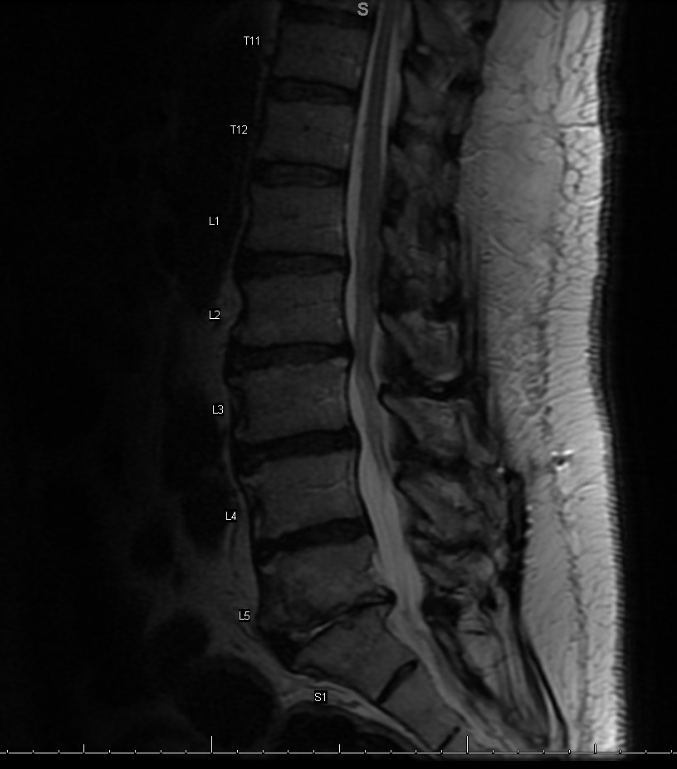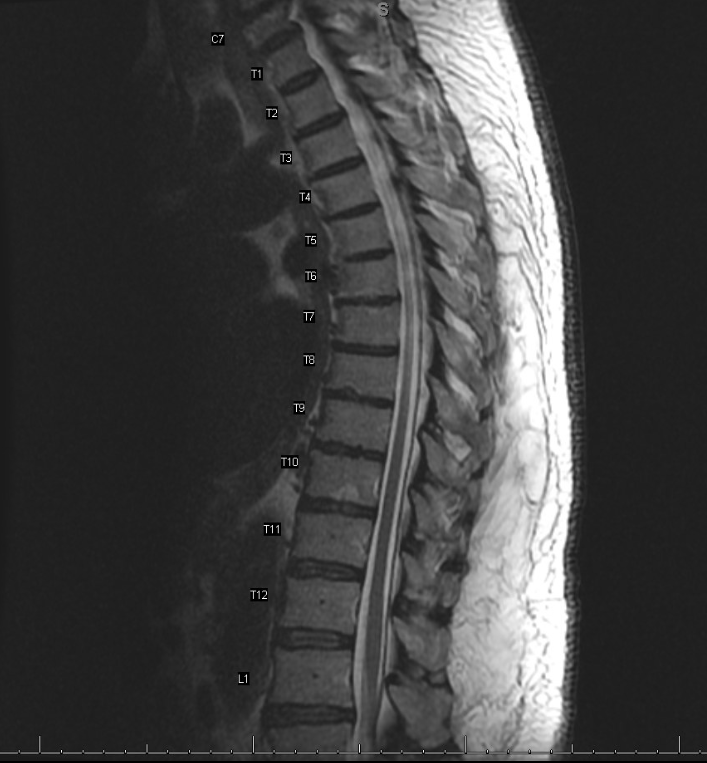Case Presentation: A 73 year old male with a history of hypertension and osteoarthritis presented to the hospital with progressively worsening back pain. He has chronic back pain, but suddenly woke up and noticed a difficult time walking and standing, resulting in a fall. His symptoms were associated with subjective fevers, chills, and diaphoresis. Vital signs revealed high grade fever, tachycardia, tachypnea, and hypotension. Laboratory findings revealed leukocytosis and lactate elevation. He received intravenous hydration, empiric antibiotics, and an infectious workup was started. Urinalysis, chest radiograph, CT abdomen, pelvis, and CT spine were negative for any acute or infectious process. Blood cultures grew pan-susceptible Proteus mirabilis. Antibiotics were de-escalated to Ceftriaxone. Given his persistent back pain, MRI of his spine was obtained which revealed L5-S1 and T10-T11 endplate enhancement suggesting multifocal early discitis and osteomyelitis. Blood cultures cleared after three days of Ceftriaxone and he remained afebrile. The patient was discharged with plans to complete 6 weeks of antibiotic therapy.
Discussion: Osteomyelitis is among the oldest chronicled diseases, dating back to 370 BC. At that time, pre-antibiotics, treatment was surgical and mortality remained high. It occurs through hematogenous or contiguous spread, with Staphylococcus aureus causing between 60% and 90% of the cases. Proteus mirabilis is a gram-negative aerobic bacillus most commonly associated with urogenital infections. Literature review revealed that osteomyelitis caused by Proteus has only been reported in 21 cases over the last 75 years. Most patients had severe underlying illnesses, immunocompromised states, or genitourinary infections. Radiographic imaging in a large number of the reported cases was subtle, further compromising diagnosis. Further questioning of our patient revealed that he had undergone vague “back surgery” over 10 years ago. It is unclear whether prior surgery that long ago made him more susceptible to seeding.
Conclusions: Proteus is a rare cause of osteomyelitis. Most infections of the vertebrae are caused by gram positive bacteria. We report a case of multifocal vertebral Proteus osteomyelitis in an immunocompetent individual without any evidence of genitourinary infection. Clinical suspicion and appropriate steps to establish the causative organism are crucial to provide early appropriate therapy, as treatment delay can lead to permanent defects.


